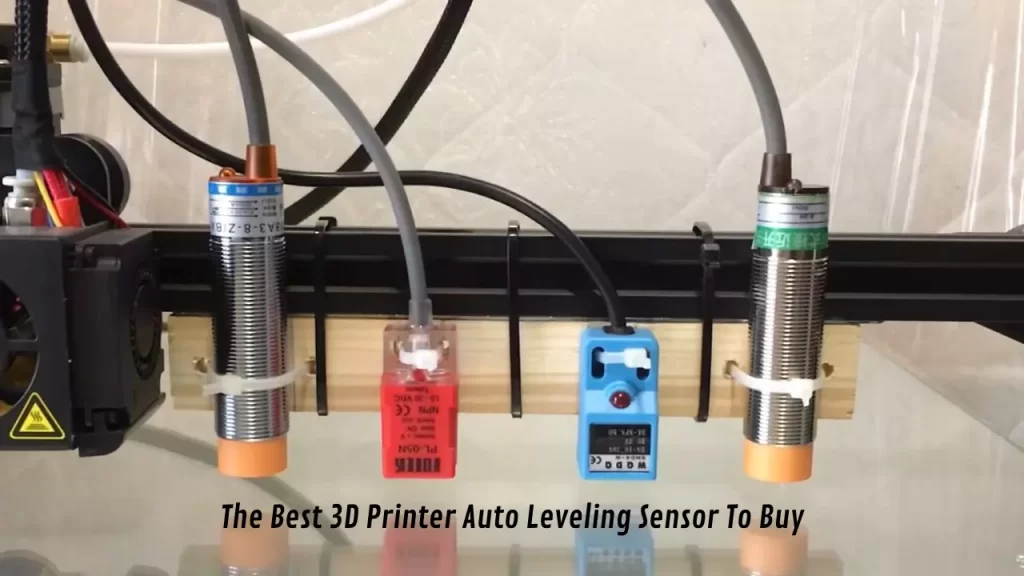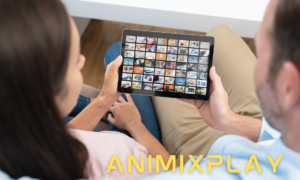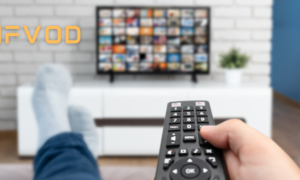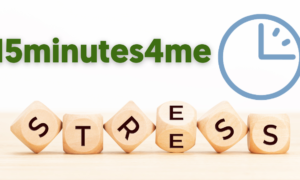Before beginning a 3D print, level the bed; unlevel beds result in warped or destroyed patterns, wasting material and effort. On most consumer-grade 3D printers, leveling Sensor of the print bed includes twisting four (one for each corner) screw knobs.
This method is tiresome and inaccurate, but there’s an auto-answer. Auto-bed leveling (ABL) is a 3D printer function that levels the bed with little user effort.
Types of Level sensors
There are other ABL sensors. Before listing the best ABL sensors, know that there are wide varieties. This section briefly discusses leveling technology.
BLTouch
BLTouch is an ABL Hall-effect device. Antclabs BLTouch is the Ender 3 V2’s most popular auto-leveling sensor. Pressing BLTouch V3.1 activates a sensor.
If you find yourself in a situation where your Bltouch failed to verify sensor state, there are a few things you can do to troubleshoot the issue. The Sensor measures the peg’s 0.01 mm movement in the device’s electric field. BLTouch’s physical Sensor has no build plate material restrictions.
Marlin’s configuration files incorporate BLTouch code. The BLTouch V3.1 has two mounting holes, making it simple to attach to a printer with hundreds of 3D printable and buyable mounts.
Installing BLTouch V3.1 should be easy. However, some buyers reported problems attaching the device to their printer’s mainboard. So check BLTouch printer compatibility before buying.
Hall-Effect
Hall-effect sensors sense static magnetic fields to estimate closeness. Some auto-bed leveling sensors employ Hall-effect sensors mechanically: magnets move a pin. This design permits ABL Hall-effect sensors to function on non-metal construction plates.
Infrared
Infrared (IR) sensors detect an object’s proximity using infrared light. IR leveling sensors include an LED, and the light reflected off neighboring objects is monitored to determine closeness. This Sensor is tough to set up yet small.
Effector
Smart effectors are 3D-printing proximity sensors. Smart effectors include ABL sensors inside the hot end, unlike traditional printhead-mounted sensors. These sensors measure a nozzle’s electrical resistance near a surface (i.e., the build plate).
Smart effectors are restricted; therefore, locating one compatible with your printer may take a lot of work. A smart effector hot end should be simpler to wire than a hot end and ABL sensor. Smart leveling sensors simplify wiring.
Inductive
Inductive sensors analyze the change in a magnetic field to assess an object’s proximity, similar to Hall-effect sensors. For example, charge a wire coil and measure its current.
Inductive ABL sensors are non-contact metal cylinders with rubber tips. Plastic or other non-metal construction plates can’t detect. Inductive sensors function on metal.
Capacitive
Capacitive sensors resemble inductive sensors, except they can sense non-metal surfaces. The ABL sensors are non-contact, like inductive choices, but they feel electrostatic fields. Despite working on any surface, this Sensor is less accurate than others.
Piezo
Piezo sensors, not popular for auto-bed leveling, may level the print bed. Like a smart effector, these gadgets use the nozzle to detect a nearby surface. Piezo sensors measure piezoelectricity.
Finding a 3D-printing-compatible Piezo sensor may take a lot of work. However, Piezo sensors are accurate and operate on most build plate materials.
touch auto bed-leveling Sensor
SuperPINDA
Prusa’s MK3S+ included the SuperPINDA. Second, Prusa Research created the SuperPINDA (Prusa Induction Auto Leveling Sensor), an inductive leveling probe. SuperPINDA replaced PINDA V2 for Prusa.
The SuperPINDA inductive leveling probe senses magnetic fields via electrical induction. Therefore, the SuperPINDA should only be used with a metal construction plate (spring steel PEI sheet).
With the proper Z-offset and a thin enough build plate, some users have discovered that the Sensor can detect the printer’s metal bed underframe.
Previous PINDA sensors employed a built-in temperature sensor to adjust for measurement variations. The SuperPINDA replaces the temperature sensor with more consistent components.
The SuperPINDA’s frame contains screw threads and a mounting nut, making it easy to connect to a printhead.
This proximity sensor
This leveling probe detects 1-10mm. This Capacitive Sensor (LJC18A3-H-Z) is a capacitive leveling sensor. It measures energy capacitance, which changes when things are in front of the Sensor with 0.001-0.01 mm precision.
The gadget has a 1-10 mm detection distance and a 65 °C working temperature, so it should function on a 3D printer as long as you’re not producing high-bed-temperature materials (e.g., ABS).
According to user feedback, the Tails Sensor is accurate and works on all bed materials. Other customers say the Sensor works nicely after tweaking its sensitivity.
Smart Effector
Delta printers need the Duet3D Smart Effector. The Duet3D Smart Effector is a delta FDM hot end and ABL sensor. Duet3D, a 3D printer mainboard maker, created the Smart Effector using a modified E3D V6 hot lot and a unique PCB to assess nozzle leveling.
Smart Effector simplifies wiring since the hot end, and ABL wires are connected. However, given its complexity and lack of popularity, installing the Sensor’s software and hardware may take a lot of work.
EFFECTOR DUET3D
ProEZABL
EZ Pro fits any construction plate. TH3D designed the capacitive leveling sensor EZABL Pro. The EZ Pro capacitive sensor doesn’t depend on magnetic fields to identify things; therefore, it can detect all bed surfaces (unlike inductive sensors, which can only detect metals).
The EZ is more expensive than other ABL sensors, but it has its power source and can be installed without soldering. TH3D’s Marlin-based firmware is suggested, although it works with Klipper and RepRap. 40+ 3D printable mounts let you connect the EZABL Pro to your printhead.
IR Probe Duet3D
Duet3D’s IR Probe works on glass. Duet3D also offers an ABL gadget that uses infrared. The system estimates distance by beaming light from two LEDs and measuring their reflections.
Duet3D IR Probe needs other settings to function on reflecting or clear surfaces (e.g., glass). Cover these areas with an opaque covering, with or without glue (it can affect trigger sensitivity). However, it’s cheap and compact. Installation guidelines are also available.
Orion PPS
3D-print a Precision Piezo Orion mount. Precision Piezo offers auto-bed leveling using Piezo sensors. The Precision Piezo Orion is a DIY auto-bed leveling kit like the Duet3D Smart Effector that adds ABL to your hot end.
The Orion’s Piezo Sensor detects and measures electrical charges with 0.005 mm precision. In addition, the Orion is linked to the hot end at the heat break to see when the nozzle meets the construction plate.
Precision Piezo says the Orion works with glass, polypropylene, and metal. Orion is more complex to install than other sensors (BLTouch), but it works with the E3D V6 hot end.









































